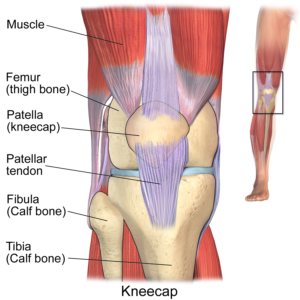Ligament and Meniscus Surgery

Typically performed arthroscopically, ligament and meniscus surgery is used to repair torn knee ligaments. Arthroscopic surgery is performed using an arthroscope, a small surgical camera, which helps guide a surgeon in making small incisions to insert instruments into the surgical site. This way, the surgeon can see what is occurring inside the body through the camera lens without having to use larger incisions needed for open surgeries. The surgeon replaces the tear with a graft (either from the patient’s knee or donated tissue).
What is it?
When a patient injures his or her ACL, injury to other knee ligaments and meniscus cartilage may also occur. When nonsurgical treatments are not the best option or do not provide relief, surgery is needed. A graft is introduced to reconstruct the ACL and allow the patient to resume physical activity.
What should I do to prepare?
For patients receiving surgery on any knee ligaments, it is important that they talk to their doctors about medications they are taking, tests that need to be done, and any allergies the patient might have. It is also important that one stops eating the night before surgery. Lastly, it is important to have a friend or family member drive them home after surgery, due to one’s very limited mobility post-surgery.
What happens during the process?
The patient will select the proper anesthesia needed for the surgery. General anesthesia, or when a patient is put completely to sleep using drugs, can be utilized. The other option is regional anesthesia, or when only a part of the body is anesthetized, and the patient is awake but sedated to promote relaxation. For local anesthesia, epidural blocks are used to numb the area completely. The patient should expect to lose feeling in that area for two to three hours. After the patient has received anesthesia, the surgeon conducts a physical evaluation and the graft (if needed) is prepared. An arthroscope, the small surgical camera used to view the insides of joints, is introduced into the knee through small incisions so that the surgeon can fully visualize the knee joint and repair the ligaments and meniscus cartilage damage. The graft is placed using special devices such as screws or staples.
What are the risks and potential complications?
Ligament and meniscus surgery comes with associated risks, that include but are not limited to:
- Infection
- Bleeding
- Blood clots
- Stiffness
- Difficulty extending one’s knee
- Kneecap pain
- Nerve damage
Disclaimer:
All GlobeHealer Site content, including graphics, images, logos, and text, among other materials on the site are only for education purposes. This content is not intended to be a substitute for professional medical advice, and you should always contact your physician or qualified health provider for information regarding your health. Information on this site regarding the overview, diagnosis, and treatment of any kind should be looked at, in addition to the advice and information of your health care professional. Do not disregard medical advice or delay seeking treatment or medical advice due to information found on the GlobeHealer site. If there is even the possibility that you may have a medical emergency, seek treatment, call your doctor, or call your local emergency telephone number immediately. GlobeHealer does not endorse being the first line of communication in case of emergency and does not endorse any specific test, physician, facility, product, procedure, opinion, or other information that is or may be mentioned on this site or affiliated entities. Reliance of any and all information provided by GlobeHealer, its employees, affiliations, others appearing on the Site under the invitation of GlobeHealer, or visitors of the site is solely at your own risk and is not the responsibility of GlobeHealer.
Image Source: https://commons.wikimedia.org/wiki/Category:Knee#/media/File:Blausen_0596_KneeAnatomy_Front.png
